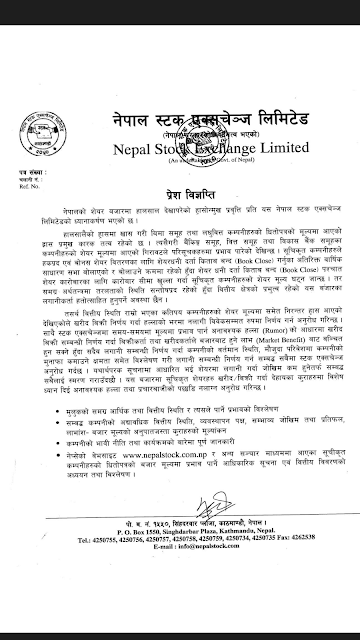Rtr. Kumar Gurung
We started farming about twelve thousand years ago. Now, we
are not just farming, we are creating new plants, new breeds, more productive
specimens and most important of all, we are researching on this topic. There are lots of hypothesis regarding origin
and development of agriculture: the Oasis hypothesis, the Hilly Flanks, the
Feasting, the Demographic theories, the evolutionary/intentionality hypothesis,
the Levantine Primacy Model and many more.
There are so many things these hypotheses suggest, none of it suggested
from business perspective. There could
be one or two regarding “power” but none regarding commerce.
Along with the industrial revolution from 18th to
19th century, agriculture started to get more vivid commercialized
picture. The use of technology, mass production of crops and food and highly
increased demand started to pull agriculture into commercialization. Along with
that new pattern of global economy, finance and trade emerged.
Nepal has about three million eight hundred thirty one
thousand (3831000) farmer’s family as per government census of 2068 B.S. We
currently have forty one percent increase in area of land used for production
of vegetables and nine percentage decline in area used for production of food
crop in the timeframe of 10 years. There are nineteen lakh thirty one thousand
families who are involved in vegetable farming which is double the number of
families ten years ago. Currently agriculture contributes 34% in total GDP of the
country. This strongly emphasizes the need for the country to be independent
regarding daily used vegetables and cash crops. During last two decades there
is 2.35% per annum increase in the production of food whereas the requirement
for the existing population is growing by 2.09 %( 2068B.S census.) Currently,
our nation is severely affected by earthquake in many places and the storage of
food and necessary commodities is not normal during this situation.
There are many industries that are contributing in our
nation’s economy. Agriculture will provide a rigid back bone for all other
infrastructure needed for development. Agriculture demands irrigation and
irrigation needs sufficient development, this provides a base for planning and
detail partition of land used for farming. Farmer produces crops and food crops. They
will harvest it each year. The produced agro products and remaining bi products
need transportation facility for delivery. This creates an environment for
rapid development.
At this present situation, we have to strongly emphasize on
social entrepreneurship. Only then we
will have strong commitment for forming a developed nation and sustainable
development. Agriculture is a most suitable path for sustainable development
because most of the nation’s population is involved in it and we will only
achieve our goal if numerous people work together for it.
We are at transition stage right now, both from political
point of view and from the stages of development. Right now we are severely
affected by earthquake, tourism sector is experiencing down ward trend,
businesses are affected and whole economy is affected. Even though detail
assessment of damage is not yet been done, World Bank's data estimates that
roughly half the country’s gross domestic product (GDP) is affected.
There are so many options we currently have. We can choose
anyone of them, choosing agriculture not only provides us with benefits of
already known business, it fits as the most efficient and reliable means for
sustainable development of the country.













